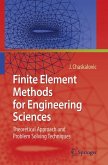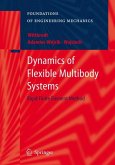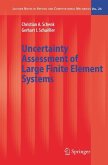later versions. In addition, the CD-ROM contains a complete solutions manual that includes detailed solutions to all the problems in the book. If the reader does not wish to consult these solutions, then a brief list of answers is provided in printed form at the end of the book. Iwouldliketothankmyfamilymembersfortheirhelpandcontinuedsupportwi- out which this book would not have been possible. I would also like to acknowledge the help of the editior at Springer-Verlag (Dr. Thomas Ditzinger) for his assistance in bringing this book out in its present form. Finally, I would like to thank my brother, Nicola, for preparing most of the line drawings in both editions. In this edition, I am providing two email addresses for my readers to contact me (pkattan@tedata. net. jo and pkattan@lsu. edu). The old email address that appeared in the ?rst edition was cancelled in 2004. December 2006 Peter I. Kattan PrefacetotheFirstEdition 3 This is a book for people who love ?nite elements and MATLAB . We will use the popular computer package MATLAB as a matrix calculator for doing ?nite element analysis. Problems will be solved mainly using MATLAB to carry out the tedious and lengthy matrix calculations in addition to some manual manipulations especially when applying the boundary conditions. In particular the steps of the ?nite element method are emphasized in this book. The reader will not ?nd ready-made MATLAB programsforuseasblackboxes. Insteadstep-by-stepsolutionsof?niteelementpr- lems are examined in detail using MATLAB.
From the reviews:
"This book is written for people studying finite element analysis ... . Additionally, short answers to all problems are provided at the end of the book. On balance, this book written in interactive manner can be very useful to students and engineers dealing with applications of finite element method in structural mechanics." (Oleg Titow, Zentralblatt MATH, Vol. 1057 (8), 2005)
"MATLAB is a popular programming platform in engineering education for its intuitive syntax, graphic visualization, facility with vector and matrix operations, and wide variety of add-on toolboxes available for specific applications. ... is most appropriate as a course resource on practical implementation of finite elements for mechanical engineering undergraduate students who have either already taken or are concurrently taking an introductory course in solid mechanics. ... The book's style is straightforward and easy to comprehend. ... Summing Up: Recommended. Lower- and upper-division undergraduates; professionals." (M. R. King, CHOICE, Vol. v4 (3), November, 2007)
From the reviews of the second edition:
"This book constitutes the numerical implementation of finite element analysis using the computer program MATLAB. ... Problems from linear elastic structure mechanics are used throughout the book. The book is very useful to both students and researchers in engineering." (V. Leontiev, Zentralblatt MATH, Vol. 1114 (16), 2007)
"The book is intended as a guide to writing finite element programs in MATLAB and understanding the main steps in a finite element analysis. The book is well written and very easy to read by students ... . The author succeeded in providing a valuable tool to help engineering students learn the main steps of finite element analysis using MATLAB." (Slimane Adjerid, Siam Review, Vol. 50 (3), 2008)
"This book is written for people studying finite element analysis ... . Additionally, short answers to all problems are provided at the end of the book. On balance, this book written in interactive manner can be very useful to students and engineers dealing with applications of finite element method in structural mechanics." (Oleg Titow, Zentralblatt MATH, Vol. 1057 (8), 2005)
"MATLAB is a popular programming platform in engineering education for its intuitive syntax, graphic visualization, facility with vector and matrix operations, and wide variety of add-on toolboxes available for specific applications. ... is most appropriate as a course resource on practical implementation of finite elements for mechanical engineering undergraduate students who have either already taken or are concurrently taking an introductory course in solid mechanics. ... The book's style is straightforward and easy to comprehend. ... Summing Up: Recommended. Lower- and upper-division undergraduates; professionals." (M. R. King, CHOICE, Vol. v4 (3), November, 2007)
From the reviews of the second edition:
"This book constitutes the numerical implementation of finite element analysis using the computer program MATLAB. ... Problems from linear elastic structure mechanics are used throughout the book. The book is very useful to both students and researchers in engineering." (V. Leontiev, Zentralblatt MATH, Vol. 1114 (16), 2007)
"The book is intended as a guide to writing finite element programs in MATLAB and understanding the main steps in a finite element analysis. The book is well written and very easy to read by students ... . The author succeeded in providing a valuable tool to help engineering students learn the main steps of finite element analysis using MATLAB." (Slimane Adjerid, Siam Review, Vol. 50 (3), 2008)








